Goheal: Let go after acquisition? Then you are destined to miss the biggest value realization zone of controlling stake acquisit
"Those who are good at chess plan for the situation, while those who are not good at chess plan for the pieces." There is a "fast food philosophy" circulating in the M&A industry: after the controlling stake is acquired, the agreement is signed, and the shareholders' meeting is passed, it is almost considered "retirement". But is it really so?
What you think is a "perfect ending" is likely to be just the foreplay of value realization. And the real "big drama" - often the integration, reshaping, and landing of operational control after the equity is received has just begun.
Goheal has been deeply involved in the project operation of controlling stake transactions for a long time, and is accustomed to the tragic scene of "successful acquisition but failed integration": some projects are abandoned after acquisition, and the old management team is insincere and the performance is reversed; some funds come in but have no decision-making power, working for others in vain; even worse, as soon as the acquisition is completed, the original shareholders "jointly counterattack", and the voting rights are eroded bit by bit, becoming the miserable party A of "control but not governance".
American Goheal M&A Group
We always hold a viewpoint: the value of controlling rights acquisition is never as simple as "taking it down", but "what can you do after taking it down" is the highlight.
So today, let's talk about those "value realization areas" that you thought were over after you acquired them, but in fact have just begun.
1. From "controlling" to "control": equity in the hands of capital and power in the hands of management, who can coordinate?
Many people pay special attention to the share ratio numbers when buying controlling rights: 51%, 60%, 2/3 absolute control, as if as long as the share ratio is in place, the company is yours.
This is totally wrong.
Controlling rights ≠ control. Especially in the A-share market, many private enterprises and family businesses have a very common situation of "shareholding in name but power in reality". You bought 51% of the shares, but you do not control the financial system, you cannot issue seals, your people cannot enter the board of directors, and you have no feelings about official seals, ERP, and customer resources.
Goheal once took over a listed company that was originally thought to have "successfully controlled", but found that its original major shareholder had firmly grasped the actual operating rights through the three tricks of "supply chain binding + retention of directors, supervisors and senior managers + public opinion manipulation". The acquirer holds shares, but "cannot enter the system", and the company's operating trajectory has not changed at all.
What to do? Our suggestion is: be sure to sign a "synchronous control transfer plan" before the transaction is completed, including a timetable for the replacement of directors, supervisors and senior managers, a financial system co-management plan, and priority designation clauses for key positions. Acquisition is not just buying shares, but also buying a "power structure". Whoever controls the process controls the company.
Only by controlling the company can you control the future market value.
2. Don't be an "equity holder", be a "market value maker"
After gaining control, many acquirers are obsessed with "exit": When can I double? When can I reduce my holdings? When can I find a buyer?
But in fact, if you only regard yourself as a "shareholder" instead of a "value growth engineer of the enterprise", you can only make money from structural arbitrage instead of restructuring the market value structure.
Looking back at those successful holding M&A cases, all of them are "deep operations after acquisition": some people replaced the CEO to reorganize the team, some people changed the business model, some people added resource linkage, and some people simply changed the main business to reshape the valuation anchor.
Goheal once led the transfer of controlling rights of a chemical company. After the acquisition, we quickly intervened in strategic adjustments, transforming it from a "traditional manufacturer" to a "new energy material solution provider", and explained a new logic in the capital market. In just half a year, the stock price doubled by 2.5 times.
This is not a victory of capital, but a victory of operation. The real M&A master is not an "arithmetician", but a trinity of "storyteller + product maker + team leader".
Equity is a ticket, and operation is the voyage.
3. Don’t ignore the “original team”: they are not opponents, but accelerators (or time bombs)
There is also a misunderstanding of controlling rights acquisition with Chinese characteristics: underestimating the “recoil” of the original shareholder team.
Many acquirers fantasize about a comprehensive replacement overnight, but the reality is that the original management is deeply rooted and the relationship network is intricate. If you don’t take them with you, they may “start a new business” with core customers, technical backbones, and system data, or even short your listing platform.
We have seen too many tragedies: just after signing the equity transfer today, the business backbone will set up their own business tomorrow; just after the delivery today, it was found that the ERP permissions were manually deleted, the customer data was cleared, and the factory was “technically on strike” three months later.
This is the real “value realization focus” after the acquisition: how to keep the original team, do a good job, and stand on your side.
In the holding project, Goheal often sets up a “management re-incentive mechanism” to lock in a part of the newly added equity and release it after the subsequent performance is achieved, forming a benign game of “the original team not only does not leave, but also works harder”.
Goheal Group
In our view, the acquisition of controlling rights is not a war, but a marriage. It is not "I can win only if you lose", but "I can win more if you win".
Making the original team a partner, not a competitor, is the real way to consolidate control.
4. From financial games to strategic upgrades: Don't ignore the new stories you can tell
After the acquisition of controlling rights, the greatest value is that you can now tell a brand new strategic story.
In the past, you were just a PE fund or an industry party. Now you can say "We hold a controlling stake in a listed company and will integrate resources in a new track in the future." You can talk about group collaboration, cross-border empowerment, secondary capital operation, and international layout...
Controlling rights are strategic narrative rights.
After completing the acquisition of a smart manufacturing platform, Goheal quickly cooperated with it to promote the injection plan of three subsidiaries, while doing additional issuance, importing profits, and improving the market value anchor point, and finally re-narrating the valuation logic as a "platform-based industrial AI parent company".
This is the greatest charm of controlling rights: you are no longer a participant in the transaction, but the leader of the market value logic.
Many people spend hundreds of millions just to get a controlling stake and then "wait for the market to lift the sedan chair"; while the truly smart people spend hundreds of millions to create a market value stage and then let others chase your narrative.
These are two different ways of thinking, destined to have two different results.
5. Conclusion: The real value is not at the moment of "signing", but at the day of "telling the story"
So we always emphasize: the acquisition of controlling stake is not a period, but a colon.
Whether you choose to "withdraw after signing and turn over the cards" or "fight after controlling and reconstruct value", behind this, it determines whether you make short-term price differences or long-term market value.
Goheal's conclusion from countless project practices is that the starting value of the acquisition of controlling stake is just the tip of the iceberg. The real value lies in whether you can ignite the structural renewal of the "post-acquisition era".
So the question is:
After you acquire the controlling stake of a listed company, do you choose to be a "quiet shareholder" or a "creator of value"?
Welcome to leave a message in the comment area for discussion. We would like to hear your views on the realization of the value of controlling rights. You are also welcome to join Goheal to discuss the possibility of the next round of trading strategies.
[About Goheal] Goheal is a leading investment holding company focusing on global M&A holdings. It is deeply engaged in the three core business areas of listed company control acquisition, listed company M&A and restructuring, and listed company capital operation. With its deep professional strength and rich experience, it provides enterprises with full life cycle services from M&A to restructuring and then to capital operation, aiming to maximize corporate value and achieve long-term benefit growth.


